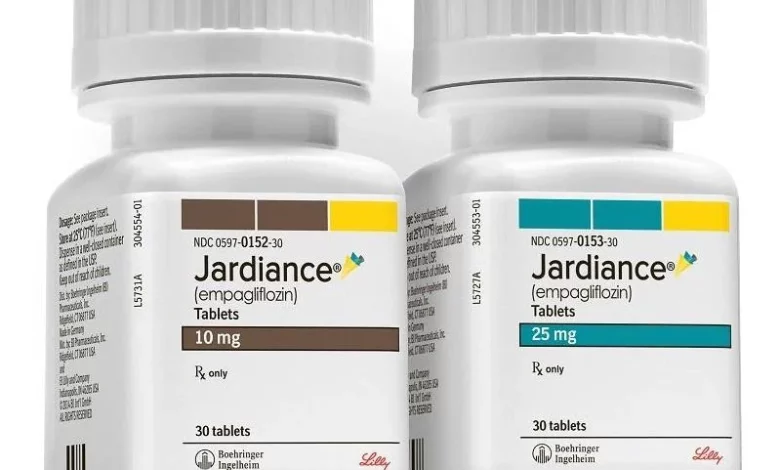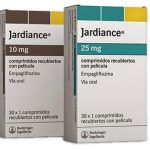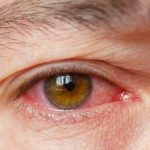3 Major Jardiance Side Effects On Eyes

Jardiance is a medication used to treat type 2 diabetes by helping to lower blood sugar levels. While it is generally well-tolerated, like any medication, it can cause side effects. In rare cases, Jardiance has been associated with adverse effects on the eyes.
In this article, we will examine the possible side effects of Jardiance on the eyes in detail.
How Jardiance works
Jardiance is a medication that belongs to a class of drugs called sodium-glucose cotransporter 2 (SGLT2) inhibitors. It works by reducing the amount of glucose that is reabsorbed by the kidneys, which helps to lower blood sugar levels in people with type 2 diabetes. While Jardiance has been shown to be effective in treating type 2 diabetes, it can cause side effects.
Jardiance Side Effects On The Eyes
One of the possible side effects of Jardiance is an increased risk of urinary tract infections (UTIs). This is because the medication increases the amount of glucose in the urine, which can provide a breeding ground for bacteria. However, the focus of this article is on the potential effects of Jardiance on the eyes.
There have been reports of Jardiance causing adverse effects on the eyes, including diabetic retinopathy and macular edema. These are serious conditions that can cause vision loss and, in some cases, blindness. It is important to note that these side effects are rare, and most people who take Jardiance do not experience them. However, it is still important to be aware of the potential risks.
Diabetic retinopathy is a condition that affects the blood vessels in the retina, the part of the eye that detects light and sends signals to the brain. High blood sugar levels can damage the blood vessels in the retina, causing them to leak or become blocked. This can lead to vision loss and, in some cases, blindness. While diabetic retinopathy is a well-known complication of diabetes, there is some evidence to suggest that SGLT2 inhibitors like Jardiance may increase the risk of developing the condition.
A study published in the Journal of the American Medical Association (JAMA) in 2018 found that people who took SGLT2 inhibitors were more likely to experience diabetic retinopathy than those who took other diabetes medications. The study examined data from more than 190,000 people with type 2 diabetes and found that those who took SGLT2 inhibitors were 26% more likely to develop diabetic retinopathy than those who took other diabetes medications. However, it is important to note that the overall risk of developing diabetic retinopathy was still low, and the study did not specifically look at Jardiance.
Macular edema is another condition that has been associated with Jardiance. This condition occurs when fluid builds up in the macula, the part of the retina responsible for central vision. Macular edema can cause blurry or distorted vision and, in severe cases, can lead to vision loss. A study published in the journal Diabetes Care in 2016 found that people who took SGLT2 inhibitors like Jardiance were more likely to develop macular edema than those who took other diabetes medications.
Despite these findings, it is important to note that the risk of developing these eye conditions while taking Jardiance is still relatively low. Most people who take the medication do not experience any adverse effects on their vision. In fact, Jardiance has been shown to have a number of benefits when it comes to eye health in people with diabetes.
One study published in the journal Diabetes, Obesity and Metabolism in 2017 found that Jardiance improved the function of the endothelial cells in the retina, which are responsible for maintaining the health of the blood vessels in the eye. Another study published in the journal Cardiovascular Diabetology in 2016 found that Jardiance improved the blood flow to the retina in people with type 2 diabetes.
It is also worth noting that Jardiance has been shown to reduce the risk of cardiovascular events in people with type 2 diabetes. Cardiovascular disease is a common complication of diabetes and can lead to a range of health problems, including vision loss. By reducing the risk of cardiovascular events, Jardiance may indirectly help to protect the eyes.
If you are taking Jardiance and are concerned about the potential effects on your eyes, it is important to speak with your doctor. They can help you understand the risks and benefits of the medication and may be able to recommend additional steps you can take to protect your eye health, such as regular eye exams.
Conclusion
In conclusion, Jardiance is a medication that can be effective in treating type 2 diabetes, but it is important to be aware of the potential side effects. While the risk of adverse effects on the eyes is relatively low, there have been reports of diabetic retinopathy and macular edema in people taking the medication. It is important to speak with your doctor if you are concerned about the potential effects of Jardiance on your eyes and to take steps to protect your eye health, such as regular eye exams.





